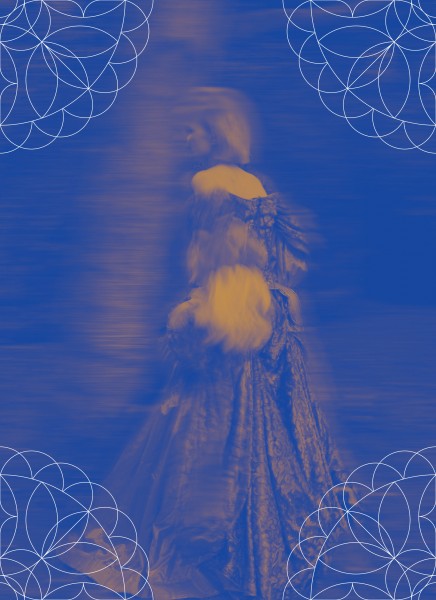This article is drawn from the third issue of Tafel: our magazine for the musically curious. Offered three times a year, this publication will, we hope, welcome new friends as well as extend the rich conversations we are already having with so many of you. Read the entire third issue here.
Fashion Forward
By Dr. Ingrid E. Mida
Anticipating the Revival of the Baroque Spirit in a Post-Pandemic World
Sartorially speaking, for many of us the pandemic period has been all about athleisure wear, DIY haircuts, and fuzzy slippers. As we look ahead to the immediate post-pandemic era, will we see an aesthetic mood swing towards opulent, baroque-inspired fashion? We invited Dr. Ingrid Mida, art and dress historian and the author of The Dress Detective and Reading Fashion in Art,to indulge in some speculative thinking.
Ingrid Mida, All is Vanity, 2010.
Fashion — a collective notion of what is the right way to look at any given time — is an aesthetic expression of the prevailing ideas, beliefs, and anxieties of society. Consequently, whether we are conscious of fashion or not, the way we adorn our bodies signals aspects of our identity, including status, gender, politics, and emotional state.
For many of us, the global pandemic has meant an abrupt shift in our sartorial preferences, and we have sought comfort in our clothing, wrapping our bodies in soft and forgiving fabrics that soothe our fears over the state of the world.
Although it is impossible to predict what the forces of fashion will ultimately deliver, fashion is continually recycling elements of the past to create new looks that capture the mood of the times. As we move towards a post-pandemic world, I anticipate a revival of the baroque spirit, with its playful exuberance and abundance of ornamentation.
During the period defined as baroque (which roughly corresponds with the 17th century), fashions for both men and women concealed the natural contours of the body with billowing folds of cloth and were ornamented with lace, gold braid, embroidery, and ribbons. Men wore flowing cloaks over tight-fitting doublets, expansive shirts, wide-legged breeches (with legs sometimes as full as a women’s skirt), and hose embellished with fanciful and seemingly endless lengths of silk ribbon bows. The gowns worn by women celebrated the gently rounded female form — with a silhouette that gave emphasis to a gently rounded stomach — and that also showcased luxurious textiles like silk and velvet in exuberant folds.
The philosopher Gilles Deleuze reminds us that these buoyant folds of clothing “are not simply decorative effects” but serve to “convey the intensity of a spiritual force exerted on the body” in this era that celebrated the arts in all its forms.
During the pandemic, we have been denied the pleasures of the arts and have had to contemplate our mortality and the meaning of life. It is through such dissonance that the folds of the soul are awakened to reconsider the dialectic between beauty and pathos, life and death, art and fashion.
One day when we can once again gather together to rejoice in the arts, I anticipate that we will embrace the spirit of the baroque era in the way we choose to dress our bodies. This baroque attitude encompasses an inclusive approach to fashion, one that is gender- neutral, since during the 17th century both men and women embraced elements of dress — like lace, ribbons, and long hair — that are traditionally gendered as feminine.
The contemporary baroque spirit will also celebrate the contours of the body — allowing us to conceal aspects of our form (perhaps those pesky pandemic pounds) in voluptuous folds of cloth (think Viktor & Rolf or Rei Kawakubo) — or perhaps reveal other parts, like a sensual décolletage framed by a lace collar or a set of shapely calves. Luxurious textiles in jewel tones embellished with embroidery, lace, ribbons, and bows will signal our jubilant mood. Bring on the baroque!
Ingrid E. Mida (PhD, Art History & Visual Culture) is an art and dress historian. Responsible for the revival of the Ryerson Fashion Research Collection. Dr. Mida is the author of books, chapters, and articles on fashion and art, research methods in fashion and art history, curatorial practice, and museum studies.

